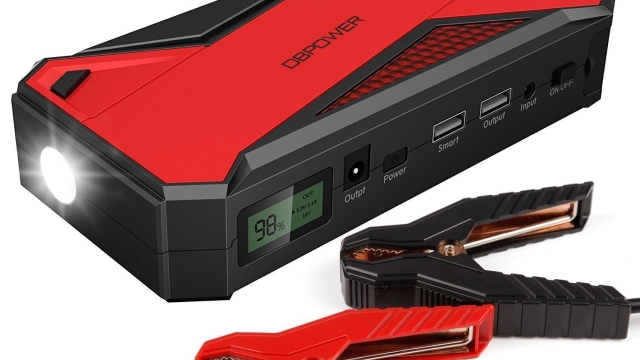Welcome to our article on how to safely jump start your car! Whether you’ve experienced a car lockout, a flat tire, or simply need a jump start, we’ve got you covered. At Rick’s Emergency Roadside Assistance, we understand the frustration and inconvenience that car troubles can bring, especially when they come out of the blue. That’s why we’re here to guide you through the process of jump starting your vehicle, providing you with step-by-step instructions to get you back on the road safely and efficiently. So, let’s dive right in and discover how to tackle car jump starts like a pro!
Step 1: Safety Precautions
When it comes to jump starting your car, safety should always be your top priority. By following these precautionary measures, you can ensure a safe and smooth jump start without any accidents or mishaps.
Find a Safe Location: Look for a flat, well-lit area away from traffic and other potential hazards. Make sure both vehicles have enough space between them, allowing room for you to work comfortably.
Put on Safety Gear: Before you begin, put on a pair of protective gloves and safety glasses. These will shield your hands and eyes from any sparks, chemicals, or debris that may be involved during the jump start process.
Turn off Ignition and All Electricals: Turn off the ignition and all electrical components in both the dead car and the assisting car. This includes headlights, radios, air conditioners, and any other accessories. Ensure that the cars are in the "park" or "neutral" position and the parking brakes are engaged.
Remember, safety should always come first. Taking these precautions will minimize any potential risks and ensure a successful jump start for your vehicle.
Stay tuned for the next section where we will cover the equipment needed for jump starting your car.
Step 2: Jump Start Procedure
24/7 Auto Lockout Services
To safely jump start your car, follow these steps:
Park the cars close enough: Position the car with the fully charged battery close to the dead battery car. Ensure that the distance between the two is minimal, but make sure the cars are not touching.
Turn off the ignition and other electrical components: Before connecting the jumper cables, turn off the ignition and any other electrical components in both cars. This will help prevent any electrical surges or damage during the jump start process.
Connect the jumper cables: Take the red jumper cable and attach one end to the positive terminal of the dead battery. Then, connect the other end of the red cable to the positive terminal of the fully charged battery. Next, take the black jumper cable and attach one end to the negative terminal of the fully charged battery. Finally, attach the other end of the black cable to a metal surface on the dead battery car, such as an unpainted metal bracket or the engine block.
Remember, always ensure that the jumper cable clamps do not touch each other or any metal surfaces other than the designated terminals.
Step 3: Additional Tips
Keep Safety in Mind
Always prioritize safety when performing a car jump start. Ensure that both vehicles are in park with their ignitions off before connecting the jumper cables. It’s crucial to wear protective gloves and eyewear to avoid any potential accidents or injuries. Additionally, remember to work in a well-ventilated area to prevent exposure to harmful fumes.Maintain Proper Cable Connections
When connecting the jumper cables, ensure that the red clamps are securely attached to the positive terminals of both the dead and live batteries. Similarly, connect the black clamps to the negative terminals. Be cautious not to let the clamps touch each other or any metal surfaces on the vehicle, as this can cause sparks.Allow the Dead Battery to Charge
After connecting the cables correctly, let the dead battery charge for a few minutes before attempting to start the car. This allows for a gradual and safer power transfer. Once the dead battery has had enough time to charge, try starting the vehicle with the live battery. If it doesn’t start, wait a bit longer for additional charging time before trying again.
Remember, these additional tips are meant to further ensure a safe and successful car jump start. By following these precautions, you can navigate through a car lockout or flat tire change situation with confidence. In cases where a jump start is not effective, consider contacting a trusted roadside assistance service like "Rick’s Emergency Roadside Assistance" for 24/7 towing and other roadside services in Chicago.

